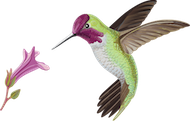The bounty of Monarch larvae in the GNG formed their chrysalis’s weeks ago and nearly all have finished emerging as adult butterflies. The garden is now full of adult Monarchs, but it didn’t come without some drama. The majority of larvae and chrysalis stayed healthy and produced adults, but nature never allows for a 100% success rate. Monarchs have many natural obstacles to avoid; birds, mammals, parasites, protozoa and virus to name a few.
 Adult Monarch – Danaus plexippus ♀
Adult Monarch – Danaus plexippus ♀
Tachinid flies are present in most all garden environments, and the GNG is no exception. These flies lay their eggs on caterpillars, including the larvae of Monarch butterflies. Once the tachinid fly larvae hatches it immediately bores into the host’s body and proceeds to eat the caterpillar from the inside out. When the larva is fully developed it emerges from its host, falling to the ground to pupate. When they exit the caterpillar or pupae, a long white strand is left hanging, evidence that this parasite was present.
 The tell-tale white strand is left blowing in the breeze after a tachinid fly larvae rapelled to the ground below. Unfortunately, this chrysalis is doomed.
The tell-tale white strand is left blowing in the breeze after a tachinid fly larvae rapelled to the ground below. Unfortunately, this chrysalis is doomed.  Adult tachinid fly of unknown species in front garden.
Adult tachinid fly of unknown species in front garden.  OE infection was fatal to this pupae.
OE infection was fatal to this pupae.
Ophryocystis elektroscirrha (OE) is a protozoa that caterpillars can ingest when feeding on milkweed. It’s spread through microscopic spores coming off the bodies of adult butterflies. When an OE infected female lays her egg, the newly hatched larvae is sure to contract the pathogen. Once ingested, these protozoa multiply inside the caterpillar and will cause weakness and sometimes an untimely death. When noticed, OE infection is usually seen during the chrysalis stage when the pupae fails.

